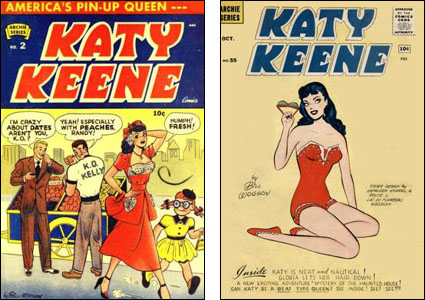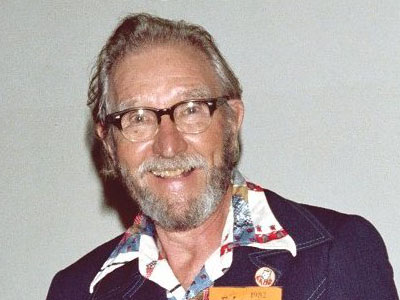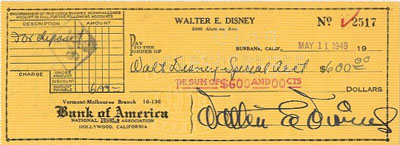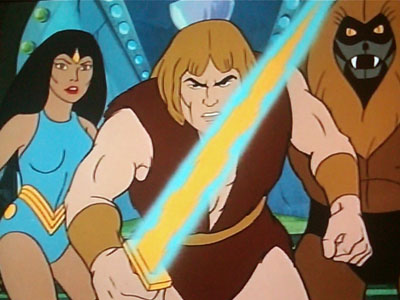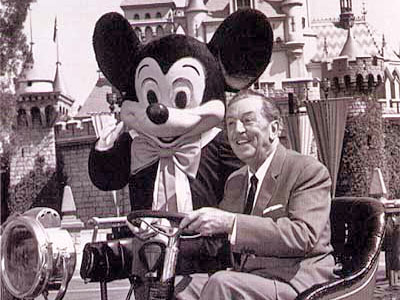
That Disney check I posted here brought a lot of e-mail about Walt, so I thought I'd post my favorite photo of the man. I never met Mr. Disney but over the years, I had the pleasure to hear him discussed by many close associates, including Floyd Gottfredson (who drew the Mickey Mouse newspaper strip for several dozen years) and Al Levitt (a blacklisted writer who wrote screenplays for Disney under a pen name). All spoke warmly of Walt, and described a man quite unlike the reactionary, mercenary executive that has sometimes been described, usually by folks with little or no first-hand intimacy. I have therefore never really believed the negative portraits. I think they have more to do with some folks' emotional problems in dealing with "father figures," and perhaps with some of the company's business practices, especially post-Walt.
Someone wrote me to ask if the story was true about Disney wearing a conspicuous Goldwater button while receiving the Medal of Freedom from then-President Lyndon Johnson. The main Internet debunker of urban legends says it's not so, and I note that at the time of the ceremony, Walt was employing Al Levitt to write films like The Misadventures of Merlin Jones and The Monkey's Uncle. Insulting the President that way doesn't seem likely for a man who would concurrently employ a writer who'd been accused of being a Communist. There are a lot of stories about Mr. Disney that I suspect are not exactly true. He wasn't frozen, he could draw (at least a little), he didn't pre-film lectures to his staff to be shown at five-year intervals after his death, etc.
Like so many things that have borne the Disney name, Walt was larger than life, and a good subject for fantasy and legend. He was also a mass of contradictions: An artist who largely gave up drawing; a businessman who did some pretty uncommercial things; an adult who not only indulged his inner child but built the kid an 85-acre amusement park. Fifteen months ago, I sat in an audience full-to-overflowing of grown-ups who felt a professional and personal connection with a man most of them had never met, almost begging for insights from those who had. I suspect that long after Mickey and Donald have faded from memory, the world will still remember Walt. And they'll still be making up stories about him.
